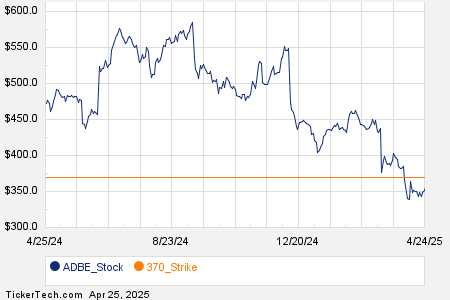“`html
Understanding Yield Maintenance: A Key Factor in Early Loan Repayment Costs
Yield maintenance is a prepayment penalty designed to protect lenders from losing income when a borrower pays off a loan early. By requiring an extra fee based on the present value of the lost interest, yield maintenance ensures that lenders receive returns similar to what they would have gained if the loan had run its full term. This approach is common in commercial real estate and long-term loans, particularly when interest rates are declining.
A financial advisor can provide valuable guidance on financing options and early repayment costs.
What Is Yield Maintenance?
Yield maintenance serves as a protective measure for lenders against early loan repayments. If a borrower pays back a loan before its scheduled end, the lender misses out on expected future interest income.
This mechanism ensures that lenders receive a compensation reflecting the lost interest. Yield maintenance is a typical feature in commercial real estate loans and those bundled into mortgage-backed securities.
Borrowers must be cautious, as early repayment can be expensive due to this clause. They need to cover the remaining principal and an additional fee, which deters early payoffs. For lenders, this prepayment protection is crucial for managing the risk of reinvesting at unfavorable rates if loans are repaid early.
How Does Yield Maintenance Work?
The calculation for yield maintenance hinges on the difference between the loan’s interest rate and current market rates at the time a borrower opts to prepay.
If the market interest rate is lower than the original loan rate, a borrower faces a penalty that approximates what the lender would have earned over the remaining loan term. Conversely, if market rates are higher, the yield maintenance fee may be lower or completely waived since the lender could reinvest at these better rates.
This system shields lenders from fluctuating interest rates. For example, if a borrower repays a loan carrying a 5% interest rate while the current market rate is only 3%, the lender will face a reduced yield on reinvestment. Yield maintenance counteracts this loss by charging a penalty that reflects the interest income gap.
How to Calculate Yield Maintenance
The formula for calculating yield maintenance is as follows:
Yield Maintenance (YM) = Present Value of Remaining Payments (PV of RP) × (Interest Rate – Treasury Yield)
Where:
- YM = Yield Maintenance amount
- PV = Present value
- RP = Remaining payments
- Interest Rate = Rate on the original loan
- Treasury Yield = Current yield on a comparable Treasury bond
The present value factor is calculated using:
PV Factor = (1 – (1 + Treasury Yield)^-n) / Treasury Yield
Where:
- Treasury Yield = Current yield on a comparable Treasury bond
- n = Number of months remaining in the loan term
For instance, imagine a borrower with $60,000 left on a loan at a 5% interest rate, with 60 months remaining until maturity. If they choose to repay early and the five-year Treasury yield has dropped to 3%, the yield maintenance calculation would unfold like this:
- Calculate PV:
PV factor = (1 – (1 + 0.03)^-5) / 0.03
PV = PV Factor × $60,000
PV = 4.58 × $60,000 = $274,782.43 - Calculate Yield Maintenance:
Yield Maintenance = $274,782.43 × (0.05 – 0.03)
Yield Maintenance = $5,495.65
In this scenario, the borrower would owe an additional $5,495.65 to close the loan early. If Treasury yields had risen, the lender’s ability to reinvest at a higher interest rate might lessen or eliminate the yield maintenance fee, although other prepayment penalties may still apply.
The Importance of Yield Maintenance

Yield maintenance is vital for lenders as it guarantees they receive a return comparable to what they would have earned over the life of a loan—even when loans are paid off early. This provision enables lenders to uphold revenue estimations and manage reinvestment risks, particularly during periods of declining interest rates.
For borrowers, it underscores the importance of thoroughly evaluating the financial ramifications of refinancing or settling a loan early. The presence of a yield maintenance fee can significantly influence the real costs of such decisions. If potential interest savings from refinancing are available at lower rates, borrowers must carefully balance those savings against the yield maintenance penalty. Due to fluctuating interest rates, yield maintenance plays a crucial role in managing long-term loan obligations.
Is Yield Maintenance the Same as a Prepayment Penalty?
Yield maintenance is a specific type of prepayment penalty crafted to compensate lenders for lost anticipated interest income. Unlike other penalties, which might involve a flat fee or a fixed percentage, yield maintenance directly aims to replicate the lender’s expected earnings.
How Does Yield Maintenance Affect Refinancing?
The potential yield maintenance fee can escalate the costs associated with refinancing, making it crucial for borrowers to evaluate whether the savings from refinancing offset this penalty.
Can Yield Maintenance Fees Be Negotiated?
Occasionally, borrowers might negotiate yield maintenance terms, especially with strong financial credentials or established rapport with the lender. However, lenders typically set these fees to safeguard their returns, suggesting limited room for negotiation.
Do Yield Maintenance Fees Apply to a Standard 30-Year Mortgage?
No, generally speaking, yield maintenance fees do not apply to standard 30-year residential mortgages. Any prepayment penalties attached to these mortgages are usually capped at a flat fee or a specific percentage of the loan amount.
“`
Understanding Yield Maintenance: A Key to Smart Borrowing
The Role of Yield Maintenance in Lending
Yield maintenance is crucial for long-term loans, serving as a safeguard for lenders against financial losses incurred when borrowers pay off their loans early. While these fees can complicate loan agreements, they also offer insights into the actual costs of early repayment. Grasping how yield maintenance functions can help borrowers make informed choices regarding loan terms and refinancing opportunities.
Strategies for Early Loan Repayment
- To expedite loan repayment, consider switching from monthly to biweekly payments. By dividing your monthly payment in half and making payments every two weeks, you essentially make 26 half-payments annually. This method translates to 13 full monthly payments, which accelerates principal reduction and shortens the overall loan duration.
- Consulting a financial advisor can be a beneficial step in managing debt and forming a plan for early payoff. Finding the right financial advisor isn’t challenging. SmartAsset offers a free tool that connects you with up to three vetted financial advisors in your area. You can also have a complimentary introductory call with your matches to determine which advisor fits your needs best. Begin your journey towards achieving your financial objectives today.
Photo credit: ©iStock.com/guvendemir, ©iStock.com/PeopleImages, ©iStock.com/skynesher
The post What Is Yield Maintenance and How Does It Work? appeared first on SmartReads by SmartAsset.
The views and opinions expressed herein are those of the author and do not necessarily reflect the views of Nasdaq, Inc.


